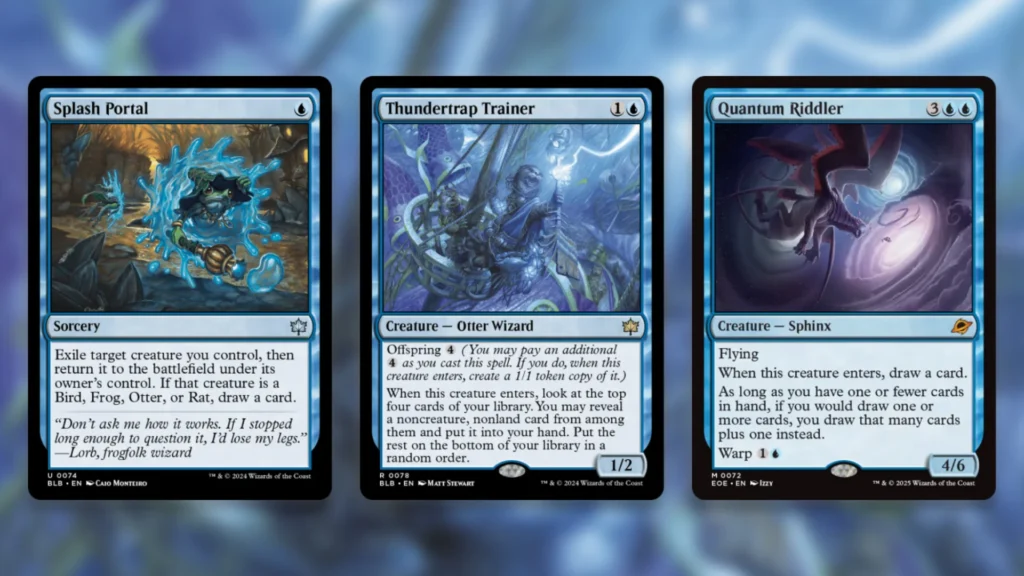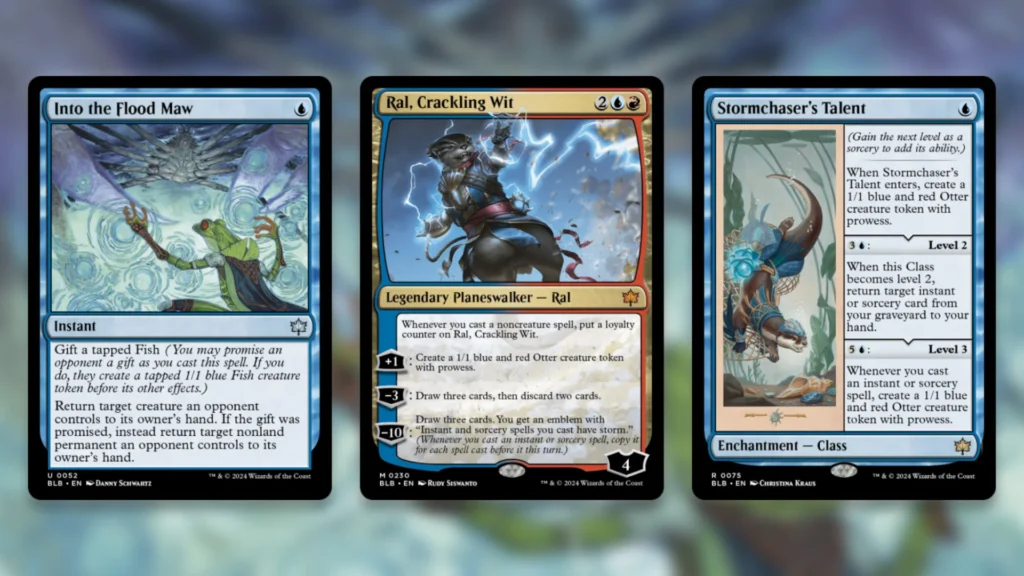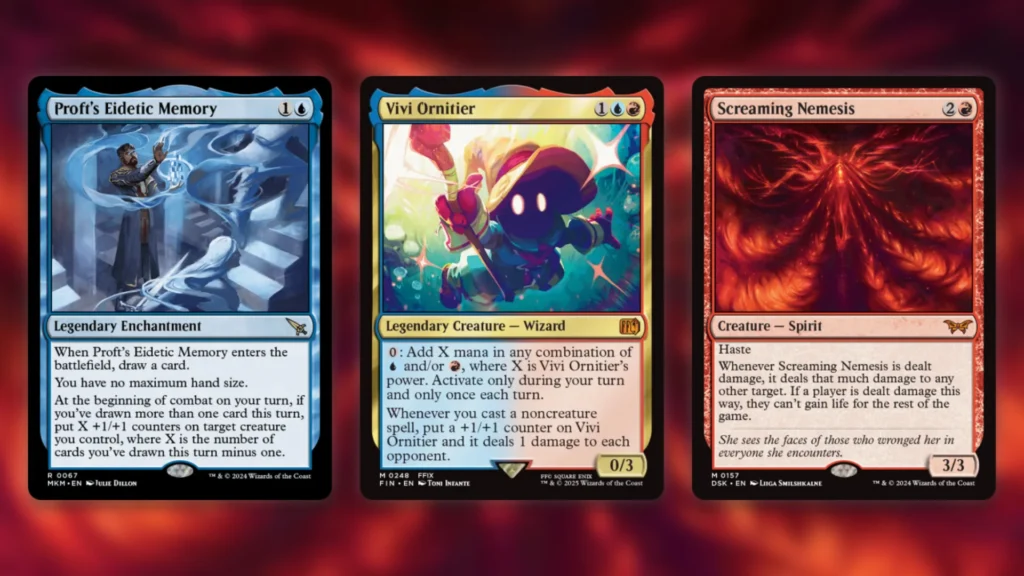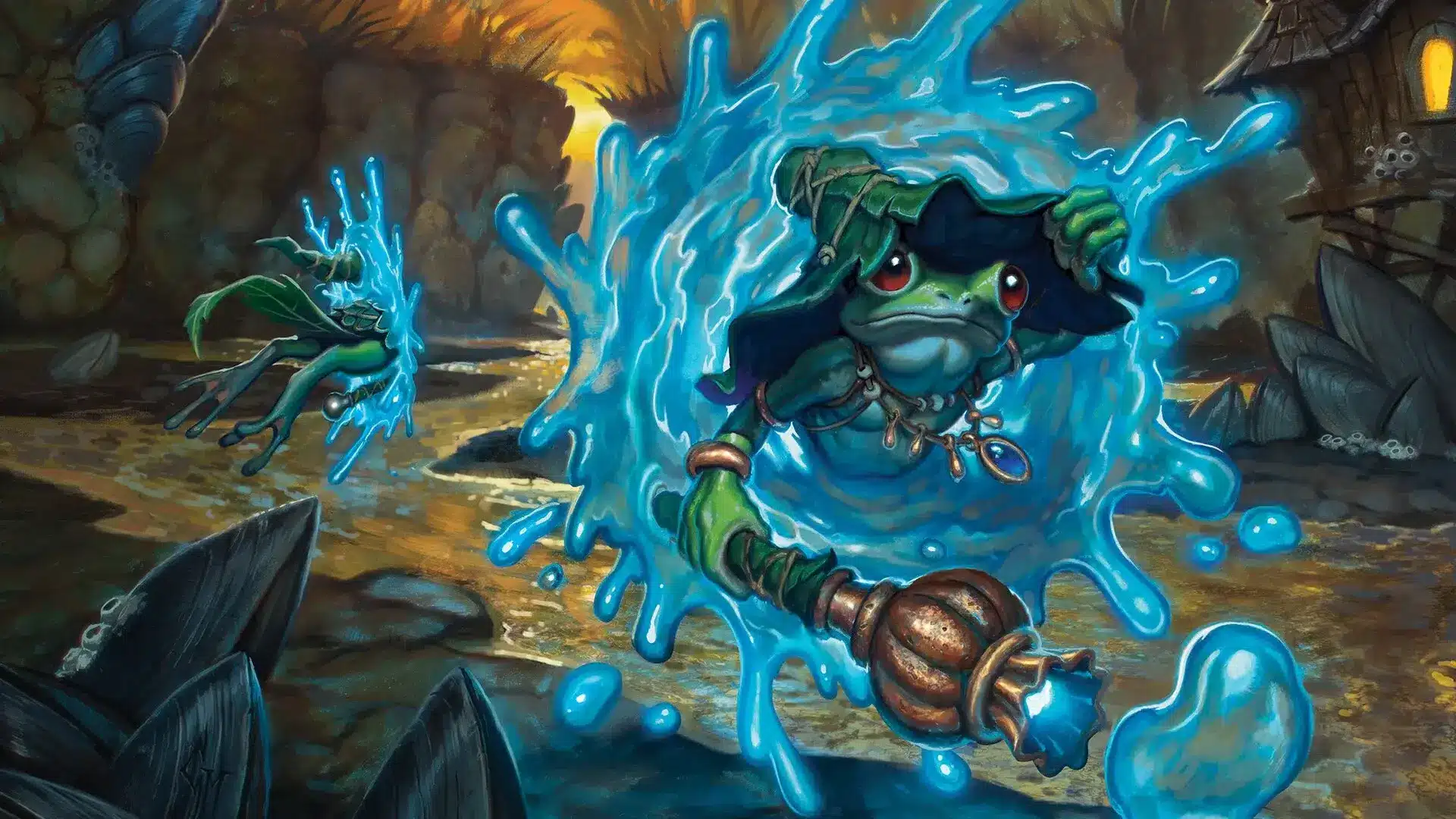After months of waiting, yesterday finally saw Wizards of the Coast take action on Standard with a spicy suite of bans. As expected, two of the biggest cards from long-time format menace Vivi Cauldron were hit. Along with a major blow to Mono-Red Aggro, these bans should, in theory, open the format up considerably. This idea was thrown into question today, however, when Izzet Prowess immediately put up strong results in post-ban MTG Standard.
While parts of the deck’s game plan are different, the heart of Izzet decks past still beats under the surface. For those who were concerned about Izzet pulling through the bans intact, this feels like vindication. That the deck is still viable, even after two very targeted bans, says a lot about the overall quality of blue and red cards in current Standard.
Izzet Prowess In Post-Ban MTG Standard

Jakobpablo was the brave soul who decided to try out Izzet Prowess in today’s post-ban MTG Online Standard League. They got a pretty great result, too, landing a 5-0 finish by the time the dust settled. While there are a lot of similarities with past Izzet Prowess lists here, Jakobpablo’s does feature a few notable innovations. Chief among these is the updated creature suite, which focuses on a blink/value game plan as opposed to the tempo one used by Izzet previously.
The only two actual creatures in the deck are Thundertrap Trainer and Quantum Riddler. Both generate card advantage on entry, and both can be flexibly cast either low on the curve or higher up. By themselves, these are pretty solid cards for the Izzet game plan. Riddler saw regular play in the pre-ban version of the deck, and Trainer often showed up in sideboards. Jakobpablo’s real innovation here is combining the pair in the main deck with Splash Portal, a one-mana Blink effect.
In Quantum Riddler’s case, this lets you blink the Warped-in version to save a bunch of mana on the full-fat one. In Thundertrap trainer’s, Splash Portal gets you a bonus card, since Trainer is an Otter. Either way, you’re generating a ton of card advantage for very little mana here, which allows Izzet Prowess to keep the momentum going.
While it’s not quite as efficient, Get Out also supports this blink-based value plan. Bouncing a couple of Riddlers and/or Trainers back to your hand is a great play, especially in response to removal. Double blue is tricky, but Jakobpablo plays a more blue-heavy mana base to support it.
The More Things Change

Outside of this new value focus, Izzet Prowess looks much the same in post-ban MTG Standard as it did before. It still relies mainly on a bunch of hyper-efficient blue and red spells to disrupt the opponent, and a suite of Prowess creatures to smash in through the gaps they create.
Stormchaser’s Talent and Astrologian’s Planisphere are the deck’s main threats. Both come down in the early game and scale up wonderfully as you throw out your various cheap spells. Planisphere is particularly good with Quantum Riddler, since it also scales up when you draw three or more cards in a turn. Using Splash Portal on a Warped-in Riddler with a small hand can easily satisfy that condition alone. Ral, Crackling Wit can do something similar with its -3, though its primary use here is to generate Prowess Otters and stack up loyalty.
Once the deck establishes a threat, it can focus on interaction and card draw. Torch the Tower and Obliterating Bolt handle your opponent’s creatures, while Into the Flood Maw ensures that you’re covered in a pinch. In terms of card draw, Opt and Stock Up are both excellent options. With the increased focus on card advantage elsewhere in the deck, these are less necessary than they were before. They’re still great for bridging gaps in gameplay, mind you.
A Bit Of Perspective

Izzet Prowess immediately landing a 5-0 League finish in post-ban MTG Standard, and an “easy” one at that, according to Jakobpablo, may have you worried that the bans haven’t done enough. Before anyone starts to panic, however, it’s worth considering the full context of this particular result.
For one thing, this is only a single League result. Looking at the overall results from it, the first MTGO Standard event since the bans, there’s a pretty healthy mix of archetypes. Simic Aggro, Azorius Aggro, Jeskai Control, and Orzhov Self-Bounce all featured. Only one archetype actually had multiple deck’s worth of representation, and that was Dimir Midrange. While we’ve only seen seven lists from this event thus far, it’s looking like a good mix.
It’s also important to remember that, in an ideal scenario, Wizards wants to bring Izzet down from its dominant position, but not leave it completely unplayable. Bans like that are bad for the long-term health of formats, since they erode player confidence and make them hesitant to invest in powerful decks. The fact that Izzet Prowess is still a valid deck choice in the post-ban format is, in that sense, a very good sign indeed.
Ultimately, things could go either way for Izzet in Standard after today. The deck could resume its position at the top of the metagame, or it could continue to achieve reasonable results, and settle into a more acceptable role. Which way things will go is anyone’s guess, but for now there’s no real cause for concern.
Stick with us here at mtgrocks.com: the best site for Magic: The Gathering coverage. Be sure to check out our deckbuilder for your next big brew!
